Learning about learning
My neighbor Paul is a pretty smart guy so we managed to get it out of the car after a lot of pulling, pushing and shoving. He had a dolly to make it easy to get upstairs, which was a great idea until we got to the door. It didn't fit. HURDLE #2 - Getting it to where I needed itBeing the smart guy that he is, Paul suggested we bring it upstairs in pieces, so we began dissecting the box and its contents. Who knew that this puppy would have a GAJILLION pieces! Kudos to the engineers in charge of packaging though. Between the masonite stablilizers, and lots of styrofoam, they'd sandwiched something that covered most of my walkway into a 36"x40"x6"box. Hurdle #3 - Putting it all TogetherNow the fun begins. Putting it together. Easier said than done! It came with 5 pages of illustrated directions. All of the pieces were numbered with little stickers, and the numbers matched the diagram in the directions. Easy peasy, right?
WRONG.
0 Comments
About five years ago I attended a higher ed workshop where the panelists introduced MOOCs (Massive Online Open Courses) and were discussing their potential impact on higher ed. There was a note of panic in their voices, because, after all, MOOCs are free and the mooc providers were "giving learning away", which might interrupt the revenue stream (read cash cow) in higher ed. The MOOC providers continued to publish, and the learners kept learning. You can read some interesting stats about them in Class Central's 2015 analysis of MOOC trends. Who's Taking Them and What are people learning in MOOCs?
What can we learn from MOOCs?There are some big lessons for us as designers around the popularity of the MOOC.
Then we began the excuses and dismissals for people who had relatives involved in a trial, the jobs that would create hardship, the grandmother traveling overseas for the birth of a child who would miss several months, etc, and one by one, the pool diminished and a replacement was added. We were close to being finished, and a "what about...." question arose from a final candidate. She was dismissed, and my name was drawn. <Cue Perry Mason music> What the heck, I figured. You can always learn something, right? I have fond childhood memories of the Perry Mason theme song playing as I walked down the hall to bed every night. It was one of my grandfather's favorite shows and it came on after the 11:00 news. Sworn to SecrecyOur training included very stern instructions that we were not to discuss the proceedings of the trial with anyone. Spouse. Mother. Therapist. Nada. No one. It was especially important because this is Rhode Island, and as a small state, six degrees of separation is more like 2.31, so we aren't allowed to talk about the cases. I can tell you that it's like watching a mashup of Law and Order where the case changes at each commercial break. We've had 16 cases so far, and I've filled up three notebooks, which, by the way, must be left in the courtroom, along with the officially appointed court pen. We may not bring our cell phones past the security guards (lest we record something!) though we can house them in a little phone locker with the security staff by the metal detectors and sign them out at lunch. I was jonesing over that the first couple of weeks (How do I tell time?) but I got over that and now don't even bother to bring my iPhone along to sit in the little locker. So What Does This Have to Do with Learning?You may be wondering, since I can't talk about any of this, what it has to do with learning. LOTS! Let me explain.
I was fishing around for something on my computer today, and came across the 2014 Innovating Pedagogy Report put out by the Institute for Educational Technology at The Open University. This report is created for teachers rather than designers and corporate training people, but it is interesting to see the trends that were identified in K12 education a year and a half ago. They include: I find it curious how many of those trends exist in today's world of instructional design and elearning. Normally, the orbits of higher ed, K12, and corporate training spin in different realms, but there appears to be a convergence here. We are all chattering about storytelling and the value of assessment, MOOCs, analytics and the flipped classroom and troubled by BYOD. If you look at a conference brochure, you'll see lots of things about these concepts. The methods of improving our education & training all include examine a variety of components: knowing what is needed (in our world, gap analysis), delivery of content, application of content, and measuring the learners' absorption of it. It seems as though we are focused on the delivery and assessment these days. Leveraging TechnologySince the advent of readily accessible technology, we have online learning and measurement options available to us, and educators and trainers attempt to effectively incorporate technology as it has become ubiquitous in our daily lives. We all experiment with things, examine the results, talk about them, tweak them, and hopefully improve what was. I know in my 40 years of teaching, I've seen lots of things change. I've tried things that worked well and things that flopped. Yet people still learned. How much, well, that's the fly in the ointment. Two hundred years ago, there was the chalkboard, classroom, a teacher imparting knowledge, and lots of reading and rote memorization. We view that as primitive, yet it takes effort to read most 19th century literature because of the dense vocabulary and long sentences. Those writers were schooled in that "primitive" classroom and have language skills that far surpass what we have today. Their methods worked. Do I suggest we return to that? No. There is so much more to learn today. There's so much more available to us with the world at our fingertips on a computer. School systems need to decide what must be in the canon imparted to children, parsing out of that enormous mass of ideas to assemble a stable curriculum. Similarly, in corporate training, we struggle to figure out what the learner really needs, despite our subject matter expert's insistence that they need the trunkful of material they toss over the wall for us to put in a 10 minute elearning module. We Really Should Leverage Cross Disciplinary ConversationI often wonder why we don't talk to one another much between K12, higher ed, early childhood and training. Granted, a key difference is the focus on children vs. adults, but there are excellent synergies that we can leverage between one another. That's why I pay attention to them all in my Twitter feed, and it's where I came across the report that sparked this post. I know that creative sparks occur when a novel concept is introduced to the mix, forcing thinking to go in new directions. Edward DeBono uses this in lateral thinking, and calls this process Random Entry. A totally unrelated idea takes our thinking in different directions. Here's a great example. In the report's article about learning analytics, Miller & Mork's (2013) value chain for discovery, integration, and exploitation of large-scale data is cited. This comes from an IT perspective, and in a very simple way, shares how we could leverage the data we collect. A question comes up here: are we collecting the right things? There's considerable effort being invested in data mining of big data, and leveraging xAPI to track user activity. I wonder how much of the thinking in this image would be useful to us as we plan our evaluation strategies. I also wonder if having a representative from IT at the table would bring a divergent perspective as we consider evaluation and assessment possibilities so we might better leverage available data. The Value of BricolageThis is where the concept of bricolage comes in. Bricolage comes from the process of playing with things at hand. Examples include the child who builds a fort out of the sofa cushions, the artist who creates sculpture from household items, the teacher who does crafts with his students using paper towel rolls, and musicians who use spoons or pots and pans as instruments. According to Wikipedia, "Bricolage is a French loanword that means the process of improvisation in a human endeavor. The word is derived from the French verb bricoler ("to tinker"), with the English term DIY ("Do-it-yourself")." I like that. Improvisation in a human endeavor. One of the tenants of improvisation is "Yes, and". Here, the players must agree with whatever the other has started, and build from there. It's leveraging imagination. Dictionary.com defines bricolage as
In education, MIT theorist of constructionism (different from constructivism) and founder of the MIT Media Lab, Seymour Papert was inspired by noting the difference between math class students and art class students carving a bar of soap. He wanted to find a way to teach math that had the inspiration of the soap carvers. Here, the soap leveraged divergent thinking for him, and from it, emerged the Logo software that allowed students to explore math concepts in a hands on fashion. He looked at problem solving in two ways: rather than being analytical, he deemed the learner a bricoleur, who learned through playing with things. Constructionism is actually learning by making. Bricolage is used in managerial and entrepreneurial literature, and seems to be tied with creativity. There's a difference though. It seems that bricolage is the result of problem solving. With the fort, the child wanted to create a hiding place, and improvised. The music maker had no drums, so the pot was inverted to become the percussionist's tool. It's a form of problem solving through experimentation. In our world, bricolage includes blended learning, mLearning, elearning, and MOOCs. The solution came about to meet a need. Learners are attached to their smartphones, which makes computing portable, so we leverage that through mLearning. We need to eliminate costs for some training, so we improvised via webinars, or create blended components so there is less seat time. These examples have been around for a while, and solved the "How might we" questions used in the world of UX. We answer with a solution that's a mashup of common tools used in a new paradigm. What was new, is now commonplace.
Education is continually working to reinvent and improve itself and supplement what is already in place. As my grandmother used to say, "Necessity is the mother of invention." "How might we" is an excellent starting point to solve a problem. Designers look at people, problems and solutions. What do we need to build next? Don't let the problem become a stopping point. Look for the "Yes, and" as well as the "How might we" to leverage what's at hand to build the next bricolage for learning. How might we do what we do better? What's in your toolkit that could spur a new way? It doesn't always need to be something new. Bricolage comes from leveraging what's at hand. What can you combine to create better learning?
A Little Knowledge is a dangerous ThingWhen we were in high school, many of us had the experience of participating in theatre. Perhaps it was on stage, perhaps it was behind stage. We had fun, and got a taste of what goes into making theatre. For those of us who have seen shows on Broadway, or other professional productions, there is no comparison to what is produced in the auditorium of XYZ High, a community players group and a show produced by professionals. They have mastered the craft and execute it well. Those of us with the beginners' taste of show business understand some of what goes on, but only a small fragment of what it really takes. I never realized how much behind-the-scenes thinking and analysis goes on, or the painstaking detail to get just the right prop or costume or flooring for the set. Heck, in high school, we memorized our lines, helped with costumes and makeup, and spent a month or two after school practicing, thenTA-DA! there was a show. In the professional realms there is thinking and trying and tweaking and tech rehearsals and blocking and lots of conversation. I've loved the glimpse into this world these activities around Trinity's shows afforded me to gain a better understanding of it all, but this certainly does not make me a theatre expert. We All Know How to Learn, Right?Similarly, we've all been to school in some form or another. Many of us have advanced through college and completed a degree or two, labeling us experts in something-or-other. This does not make us experts in learning or how people learn or creating materials to facilitate that process. Many people I've worked with over the years as subject matter experts (SMEs) would disagree with that. They are experts in a computer system or company product or algebra or biology or whatever it is that we have been tasked to create learning for others about. As a team, it's the SME and me. (Doesn't that sound like a TV show?) I don't challenge the SME on his or her expertise on the subject, yet we play tug of war for hours on how to help learners grasp it. If most SMEs had their way all training or elearning pieces or college courses would be LONG verbose treatises filled with jargon, zillions of minute details and tons of irrelevant material that would take you days and days and days to read, yet we are somehow supposed to condense this into a one hour elearning or some other impossible task. So we fight. I skinny it down, and they puff it back up again. It gets even worse when you have a committee working on the review as they agonize whether the word should be validate or authorize or the color of the shirt on the person in the photograph. I always work with my SMEs to come up with a single sentence goal for the course about what the learner should know and do at the end. I push them to get this down to that high level overview, then use it like a mantra to help them focus on the goal. Will knowing every exception to the rule helps us achieve said goal? No. So we shelve the exceptions for another course, or an addendum after the learner has gained what we wanted them to. so What?
Lessons from the LearnerI've just finished six days of intentional learning. From the time my feet hit the floor till I collapsed on my pillow, I was engaged in discovery about learning. I'm pooped! Most of that time I was in Orlando at the Association for Talent Development International Conference and Exposition learning with and from 10,000 people who work building learning for others. I've been at this for twenty years when I made the move from teaching to training. I've seen the name of what we do evolve over the years. Now we call it talent development. Whatever you call it, it's about designing learning to solve business problems. I learned a ton over the last few days. Here's a recap of the highlights. Solving Business ProblemsTraining is often viewed as a cost center in business because we don't generate revenue. However, if we do our job the right way, we become a valued business partner, enabling employees to do their job better and learn new skills. Foundational to that is linking the goals of what we do to the problems businesses need to solve.
Performance Consulting is the process of uncovering business problems at the root of what is presented as a training need. It's about examining things systemically, to look for the causes of the problem, which may be related to coaching and feedback issues, process problems, or even a problematic environment. The key is that the business needs inform the performance needs the individuals must do. We uncover those needs through questioning. Dick Handshaw provides an excellent listing of questions on his website. Aligning our training to those uncovered needs ensures we solve the right problem that impacts business results. Dick Hanshaw elaborated on the role of instructional design to create the learning solution for the problem. One concept that he has that I've not seen in other models is the blueprint, where everything is laid out prior to production. There is great wisdom in this. Building Strategic Linkages: Map and Measure Your Learning StrategyAjay Pangarkar Handout Link In this workshop we also talked about meeting business goals but by looking at things strategically. We looked at how business maps things out: Then we looked at how this is measured, using a balanced scorecard approach: My takeaway from this session was to look for the metrics being used to measure in the business and see how we might leverage them in training, and to focus on more alignment of learning goals with business goals. Innovating Learning Through Design Thinking Interview TechniquesAmanda Chavez and Katarzyna Siedlecki Handout Link
Depending on the model, you'll get pictures like these to depict design thinking. The one on the top is the model used at Stanford, and the one on the bottom is the model used at Booz Allen Hamilton presented in the workshop. The principles are similar in the world of instructional design, but with design thinking the ideate process is a bit more fluid and creative. I loved the idea of doing this with the subject matter experts that I work with to toss around ideas to generate a better end product. In this workshop and a similar one I attended during the week, we used mindmapping, post-it notes, and brainstorming techniques as part of the problem definition, and solution generating process. I definitely want to experiment more with this. If you want to know more, there's a great infographic at the Design Management Institute. I came, I Learned, I presented. I was able to share some of my expertise with people in my session on Ubiquitous Learning: Leveraging the Strengths of Online Learning. Having done all of the development work I did for the college over the past five years, I've seen some things that work well, and that really don't in online learning, and was able to show some examples of things that I've used with great success. Online learning is everywhere, and we miss out on a great opportunity not to leverage it. I had several international folks come up to me after the session to inquire if I'd fly to their company to present my workshop. We shall see where that goes. For now, we continue to learn. I spent several hours this evening going through the handouts for the sessions I was unable to attend. That's one of the benefits of online learning and access: I was able to extend the learning another day, and through mediums like this blog, share ideas with others to continue to learn. I love that. Don't you? Loving LearningI'm at Learning Solutions 2015, in Orlando, Florida. It's big conference #2 of 3 for me for this year. I just love this stuff. I presented a program this year on Universal Design for Learning (UDL), which was a new topic to many. UDL is about making learning accessible and equivalent for all learners. Most elearning designers generate a transcript for audio portions of video, select colors that are color-blind friendly, and may even write tags for pictures that are screen reader friendly. UDL goes beyond that and considers the remedial learner, the gifted learner, the ESL learner, the dyslexic learner and any other learner who may take the program, and provides avenues that consider varied ways to present the WHAT of learning (representation) the HOW of learning (activities and expressions) and the WHY of learning (engagement). Thinking through and planning for these learners makes for a richer experience that benefits all. I'll write more about that another time. MotivationI've been coming to this conference nearly every year since 2002 during the early years of the eLearning Guild. This is such a great conference! I love being able to present, I love attending with sessions, I love the learning, but most of all, I love connecting with the people that I meet. I have learned so much over the past 13 years from my colleagues as we have wrestled together over issues, and learned from one another. The Guild truly is a community of practice, and has been a catapult for my career. I've had the opportunity to introduce my colleagues to the Guild and this year had the privilege of watching two people from my former team present for the first time. Now I get to watch them grow as they connect the dots from the people they have met and the workshops they attended. This year I got to meet some new friends whose workshops took me in directions I've never considered before, despite working in eLearning for 18 years. New Faces, New Discoveries
One Day to Go!If we weren't full enough, there's yet another half day tomorrow, ending with a keynote on Design Thinking. I'm looking forward to topping off my learning tank for the week with some new inspiration. Thank you eLearning Guild for the hard work to pull this off year after year.
So.... if you're here, what did you learn this week?
I love conferences, and my friends might consider me a conference junkie. During this event, I've been struck by the fact that most of the workshops I've attended have been lectures with PowerPoint slides, one of the things that people lament about as being the dreadful part of training. I've been totally engaged by the content, and left making connections to my world. What is it about conferences that make them engaging that is such a contrast to much of our training that puts people to sleep?
So What?What does all this mean for us? How can we create right-sized learning that learners are invested in?
Impossible, you say? I'm not so sure. We do it with conferences all the time.
Are Your Learners Leaving at Intermission?I wrote earlier about the elearning that caused me to bail on getting my PMP certification because of the vocabulary spouting talking head. (Yup, I left at intermission on that one.) Last week, I was asked to take a technical training course to be able to access a software application at the office. The training consisted of 10 modules, with directions telling me I had to complete two mandatory sections and an elective. There were two mandatory items and eight optional ones. There were also two labeled advanced and eight labeled beginner. I suppose you can guess which of the ten the mandatory ones were. My goal is to be able to set up a shared resource site You'd think this would be easy, right? There is no seeming order to the modules. Each covers a different topic, with well designed how-to instructions and practice exercises. The production values were great. However, as a learner, I feel like I have no idea WHY I need to learn these things because I have no idea WHAT I'm going to do with the software so far. I have an idea of what I WANT it do do, and I suspect going to this repository to ask HOW to do these things would be a much more efficient way to access the knowledge repository of all of these skills. There is no Table of Contents of the modules. If you search the repository for the software name, you get 87 modules with titles and descriptions, but nothing that seems to overview the software or its purpose. So now I know how to mark a post Employee of the Month. Yay? Granted, there are nine other modules I need to work through, so perhaps I'll find something to meet my goals. I've found myself being baffled by the first module because I didn't have any context. I imagine that be it will the same with other modules, unless I can find something that sequences this. The best way I can explain this is to imagine yourself being dropped into the help section of a piece of software, picking random items and pretending this is the way to learn how to use it. There's a Difference Between Learning Something New And Finding an AnswerThe point of all of this is that we need to understand the learner need when we are creating training. If someone has experience and needs specific answers, send them to the repository. If they have no foundation, sending them to a knowledge repository without a curriculum plan or sequence of activities is like sending someone to the librarian to learn calculus. A librarian knows how to find specific information, and is a resource to be used thusly. When you need to learn something from the beginning, you need a teacher, or a curriculum set up by one who teaches. A teacher plans the activity and breaks things into bite sized, sequenced lessons. A librarian finds resources to find answers.
Big difference. Remember what role you play when you provide learning to your learners. |
Jean Marrapodi
Teacher by training, learner by design. Archives
January 2018
Categories
All
|
Conference
|
Company
|
|
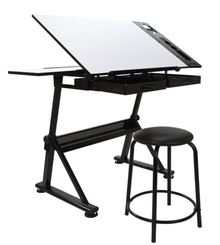
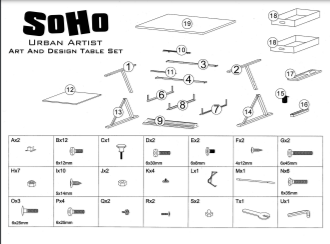
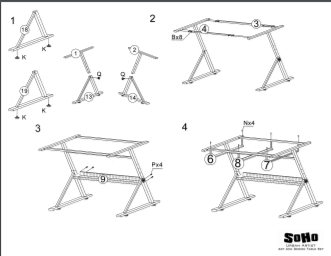
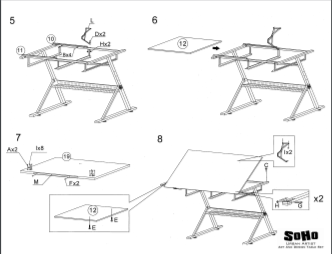
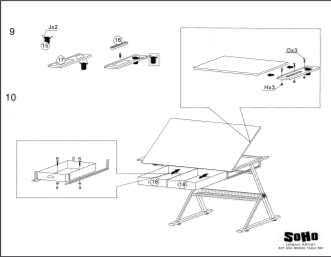
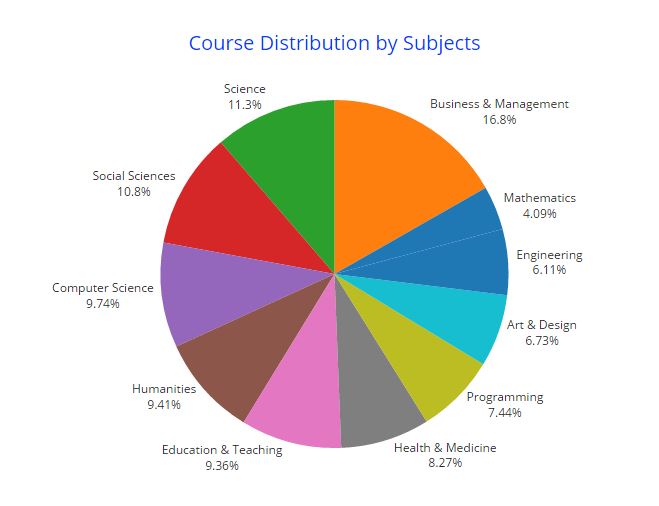

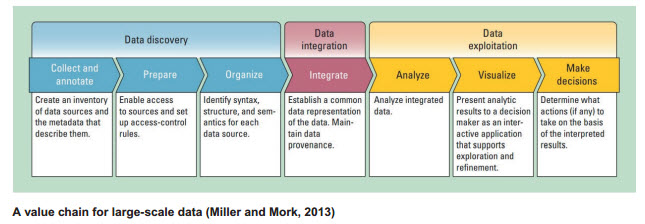




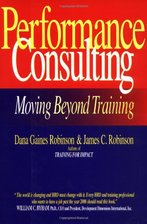
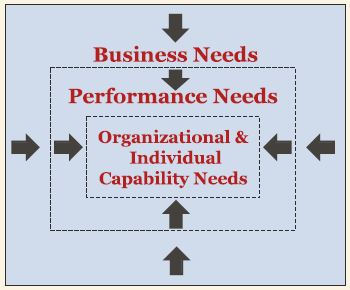
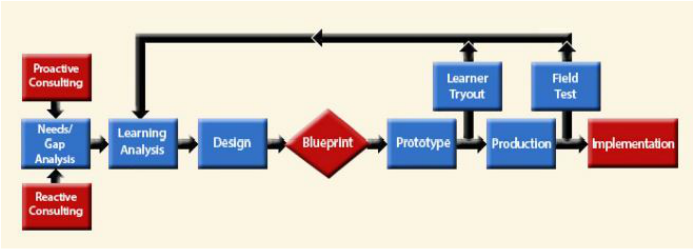
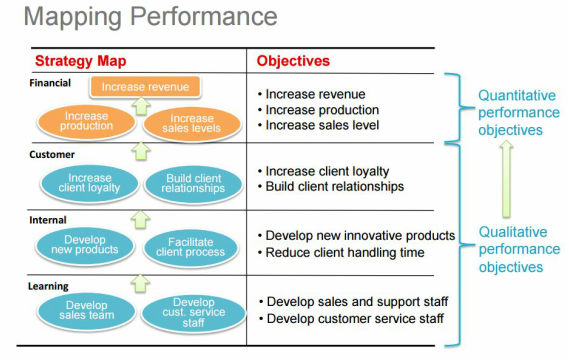
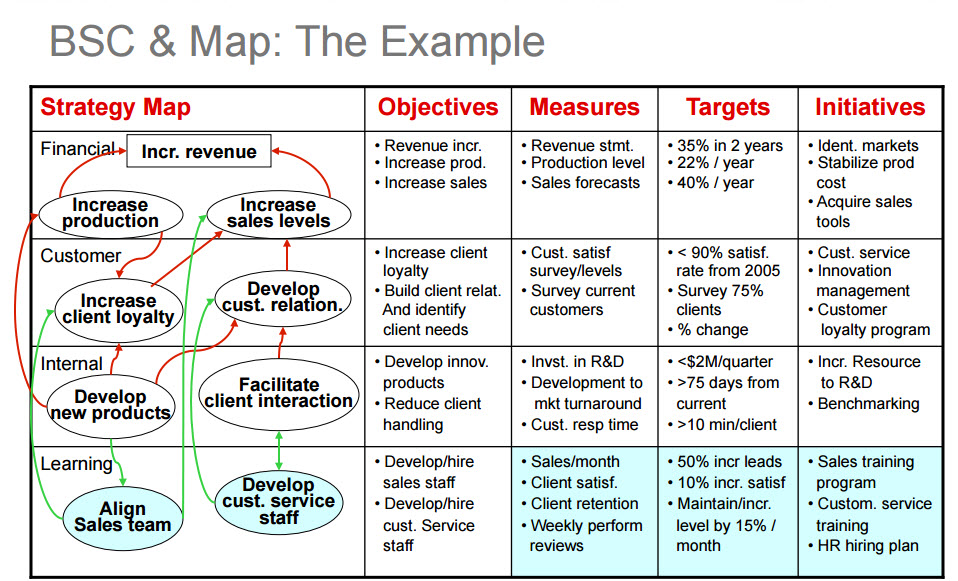
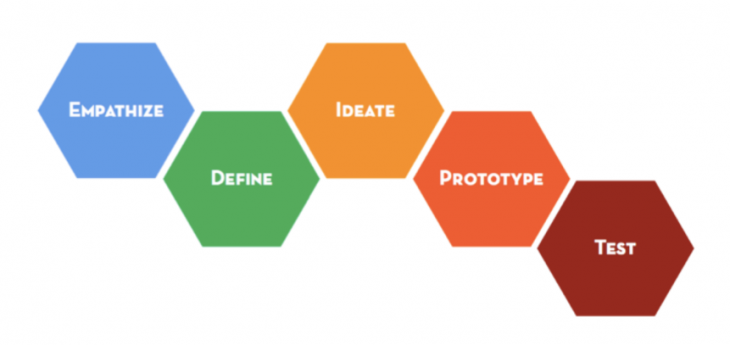
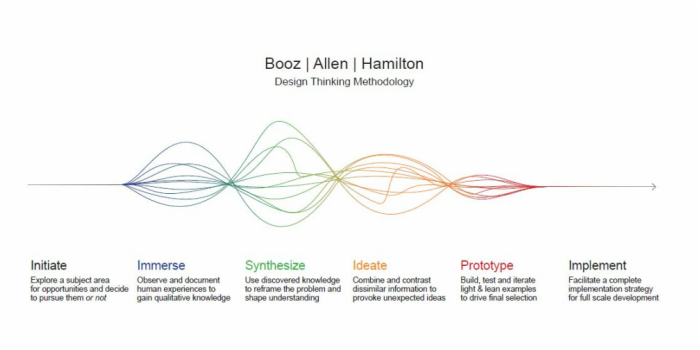


 RSS Feed
RSS Feed